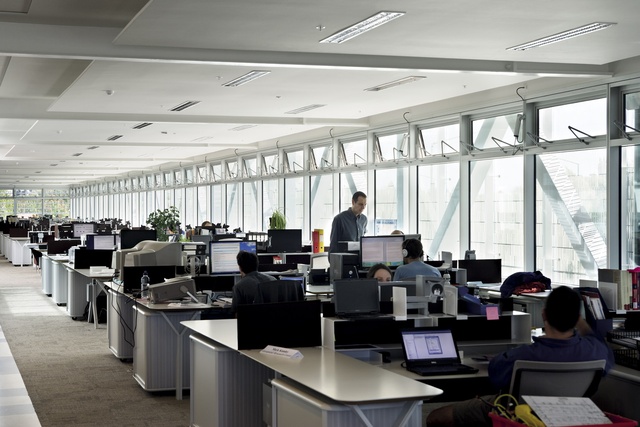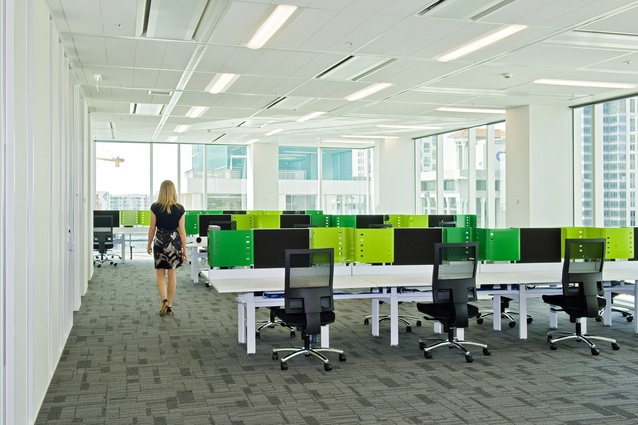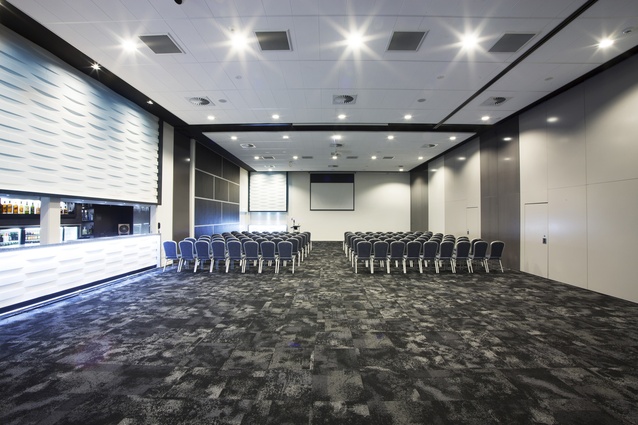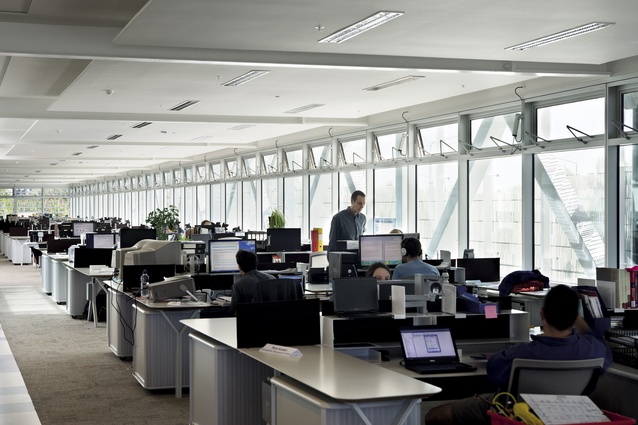Bio-informed design
Steve Aschebrock explains how making interior environments healthy allows occupants to reach their full potential, and why biology needs to be incorporated in building design.
Bio-informed design refers to the need to cater for a healthy environment within the confines of the mechanical and physical built landscapes that we create. Air handling systems and physical structure is about making humans comfortable. Yet true comfort comes from the human body and mind integrating all factors in the physical, biological and psychosocial environment. Chemistry and Physics only provide half the answer. Bio-informed design provides the the other half.
Resident microbial landscapes exist all around, and on us. In the industrialized world, millions of people spend their entire working day, eight or more hours, inside office buildings, sometimes without going outdoors the entire day. 1 In a building where bio-informed design has not been considered, occupants can be caused discomfort, resulting in low productivity, increased sick days and health problems.
Elements that need to be considered in bio-informed design are ventilation, lighting, temperature, noise levels and the most prevalent, interior air pollutants, including Volatile Organic Compounds (VOCs) and micro organisms. 50 or more VOCs are often found to exist at average concentrations of 200ppb (existing buildings) and even 1000ppb (new buildings), 2 which are more than those in outside air. Studies have shown that VOCs can lead to headaches and respiratory problems. 3 Along with VOCs, there are also many micro organisms in the air and on all surfaces. Studies of office building air have detected as many as 106 bacteria per cubic meter, 4 and the constant influx of microbes brought in with office workers makes for a dynamic microbial environment. 5
Human skin, as well as oral and nasal cavities, harbour trillions of micro organisms that may be shed and that accumulate in offices. 6 Microbes from soils or other environments can also be transferred by office workers or be carried on dust particles from the outdoor air. 7 Moreover, indoor office buildings offer unique chemical environments not encountered in the natural world that may enrich particular microbes. 8 Culture-based microbiology studies have shown that viable micro organisms are readily obtained from offices and other indoor environments such as schools, houses, hospitals and restrooms. 9 While humans are increasingly spending more of their lives in office buildings, we remain relatively ignorant about the microbial diversity of these habitats. 10 Microbial diversity can harbour Methicillin-resistant Staphylococcus aureus (MRSA). MRSA infections have increased by more than 90 percent between 1999 and 2009. 11 Studies have also proven that close quarters and shared items can affect the spread of infections and sickness in a commercial or institutional environment. These factors take a serious toll when a staff member contracts MRSA, increasing the risk of an outbreak that could potentially spread to other staff members and patients.

In order to reduce the risks of transmission associated with a serious disease such as MRSA, it is important to take proactive, preventative measures. Most often, MRSA is spread through hand contact, but hand contact is not necessarily represented by direct hand-to-hand interaction. Surfaces throughout the entire office have been shown to have the propensity to become contaminated and support MRSA bacteria. High-touch points (such as light switches, phones, keyboards, pens, doorknobs, touch panel screens, photocopiers and other shared equipment) are capable of transferring microbes. MRSA isn’t spread just by direct hand contact or even indirect hand contact with surfaces. It is possible that when an infected staffer or patient coughs, he or she may spread airborne droplets that are carried throughout the office landing on walls, floors and furniture. This capability to utilize multiple points of transmission makes MRSA and many other pathogenic organisms even more difficult to prevent from spreading.
Interior design that is bio-informed can decrease VOCs and limit the transfer of pathogens. Low VOC interior environments can be created in both new buildings and existing buildings through elimination, reduction, substation or source isolation, in particular the selection of interior products following the New Zealand Green Building Council’s guidelines for low VOC products.
The number one measure for limiting the spread of MRSA and other pathogens is washing hands regularly. 12
However, interior lining materials that have active microbial management systems built into the product to deal specifically with MRSA and other harmful microbials can provide a significant benefit to the interior space by passively neutralising these microbes.
The human person working, playing, learning, living in the building is the only reason that the building exists in the first place. Making this interior environment healthy allows occupants to reach their full potential in whatever activity they are undertaking. Biology needs to be incorporated into interior and full building design.
Footnotes:
1. Custovic A, Taggart SC, Woodcock A (1994) House dust mite and cat allergen in different indoor environments. Clin Exp Allergy 24: 1164–1168.
2. IEQ-3 Indoor Air Quality. (2009). Retrieved May 28, 2013, from New Zealand Green Building Council: www.nzgbc.org.nz
3. An Introduction to Indoor Air Quality (IAQ). (2012) Retrieved May 28, 2013 from United States Environmental Protection Agency: www.epa.gov
4. Feazel LM, Baumgartner LK, Peterson KL, Frank DN, Harris JK, et al. (2009) Opportunistic pathogens enriched in showerhead biofilms. Proc Natl Acad Sci USA 106: 16393–16399. doi: 10.1073/pnas.0908446106.
5. Rintala H, Pitkaranta M, Toivola M, Paulin L, Nevalainen A (2008) Diversity and seasonal dynamics of bacterial community in indoor environment. BMC Microbiol 8: 56. doi: 10.1186/1471-2180-8-56.
6. Dethlefsen L, McFall-Ngai M, Relman DA (2007) An ecological and evolutionary perspective on human-microbe mutualism and disease. Nature 449: 811–818. doi: 10.1038/nature06245.
Fredricks DN (2001) Microbial ecology of human skin in health and disease. J Investig Dermatol Symp Proc 6: 167–169. doi: 10.1046/j.0022-202x.2001.00039.x.
7. Brodie EL, DeSantis TZ, Parker JP, Zubietta IX, Piceno YM, et al. (2007) Urban aerosols harbor diverse and dynamic bacterial populations. Proc Natl Acad Sci USA 104: 299–304. doi: 10.1073/pnas.0608255104.
8. Goldberg I, Rock JS, Ben-Bassat A, Mateles RI (1976) Bacterial yields on methanol, methylamine, formaldehyde, and formate. Biotechnol Bioeng 18: 1657–1668. doi: 10.1002/bit.260181202.
9. Kampfer P, Andersson MA, Rainey FA, Kroppenstedt RM, Salkinoja-Salonen M (1999) Williamsia muralis gen. nov., sp. nov., isolated from the indoor environment of a children’s day care centre. Int J Syst Bacteriol 49 Pt 2: 681–687. doi: 10.1099/00207713-49-2-681.
9 Macher JM (2001) Evaluation of a procedure to isolate culturable microorganisms from carpet dust. Indoor Air 11: 134–140. doi: 10.1034/j.1600-0668.2001.110208.x.
9 Flores GE, Bates ST, Knights D, Lauber CL, Stombaugh J, et al. (2011) Microbial biogeography of public restroom surfaces. PLoS ONE 6: e28132. doi: 10.1371/journal.pone.0028132.
10. Rintala H, Pitkaranta M, Toivola M, Paulin L, Nevalainen A (2008) Diversity and seasonal dynamics of bacterial community in indoor environment. BMC Microbiol 8: 56. doi: 10.1186/1471-2180-8-56.
11. MRSA in the Office. Peter J. Sheldon Sr. Aug 16, 2010
12. MRSA in the Office. Peter J. Sheldon Sr. Aug 16, 2010













